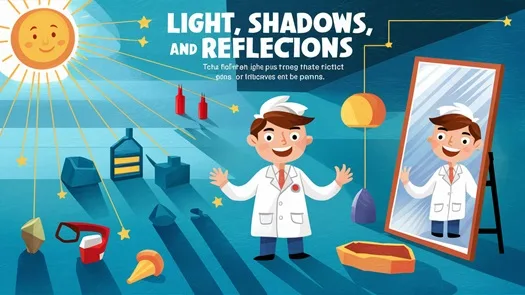
Class 6 Science Chapter 8 – Light-Shadows and Reflections
NCERT Solutions For Class 6 Science Chapter 11 – Light-Shadows and Reflections
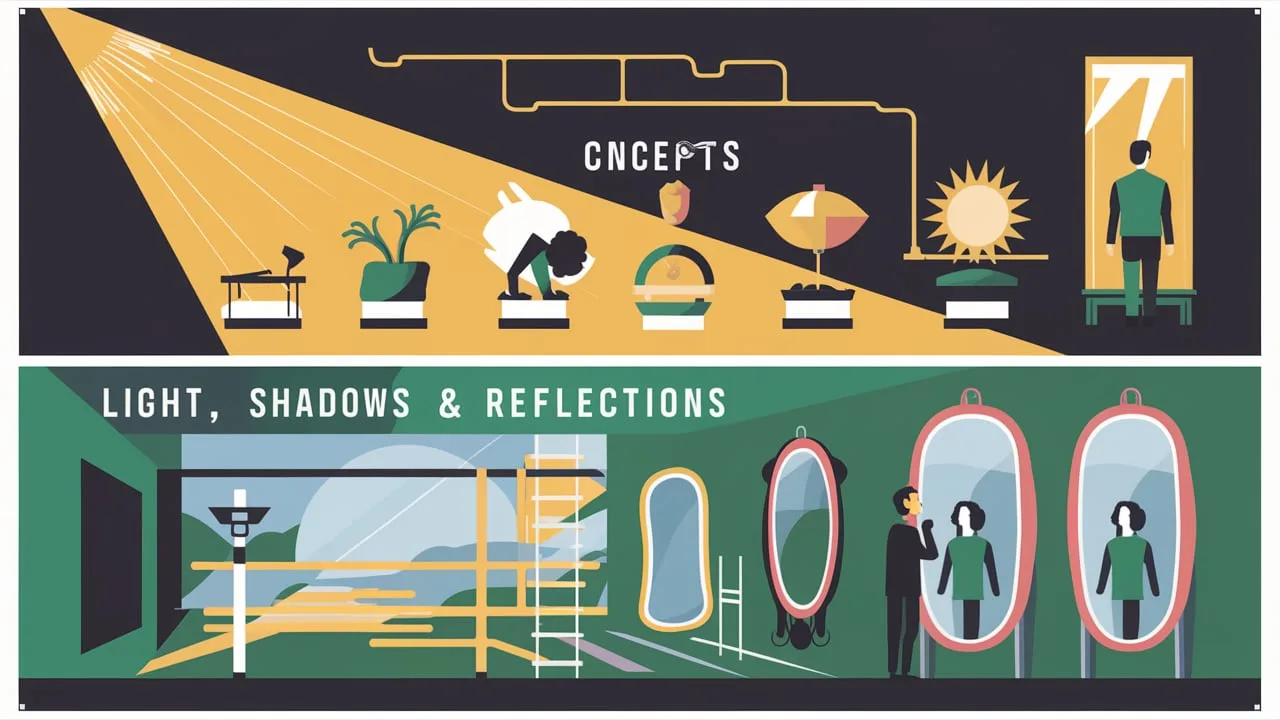
Light plays a crucial role in helping us see different objects in our surroundings. It is a type of energy. When an object is exposed to light, some of the brightness is bounced back. This reflection is what enables us to observe things around us. The reason we can’t see things in darkness is not due to a lack of light, but rather because there is no reflection happening. NCERT solutions for Class 6 Science Chapter 11 provide a comprehensive understanding of the concepts related to light, shadow, and reflection.
Sources of Light
Sources of light can be categorized into two types:
- Luminous: This refers to objects that emit light on their own. Examples include the sun and electric bulbs, whether natural or artificial.
- Non-Luminous: These are objects that do not emit light by themselves but only reflect light, allowing us to see them. Examples include the moon and mirrors.
It’s important to note that we can see our reflection in a mirror because it reflects light. If we were to hold a mirror in a dark room, it would be impossible to see objects through it.
Is Light a Traveler?
Rectilinear Propagation of Light
Light takes the quickest path between any two points. Therefore, light travels in a straight line. This is known as a rectilinear propagation of light.
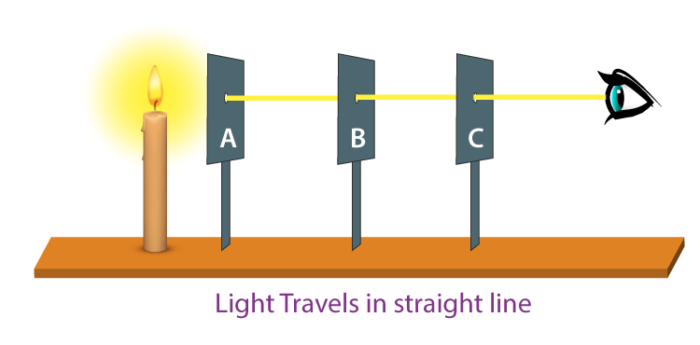
Transparent, Opaque and Translucent Objects
Luminous and Non-luminous Objects
- Objects that emit light and heat are known as luminous objects. For example, Sun and other stars
- Objects that do not produce their own light but reflect the light emitted by luminous objects are known as non-luminous objects. For example, the Earth and the trees
Transparent, Opaque and Translucent Objects
Objects can be classified based on their interaction with light.
- Transparent objects allow light to pass through them without getting scattered. For example, glass
- Translucent objects allow light to pass through them partially. For example, Butter paper
- Opaque objects do not allow any light to pass through them. For example, a table, a book, etc
What are Shadows?
Shadow Formation
- A shadow is formed when an opaque object comes in the path of light.
- A shadow needs a screen where it is formed, for example, the ground, walls of a room or even the surfaces of buildings.
- Shadows give us an idea about the shapes of different objects. Also, it can even mislead us about the shape of different objects. E.g. the shadow of a cone appears to be a triangle on the screen.
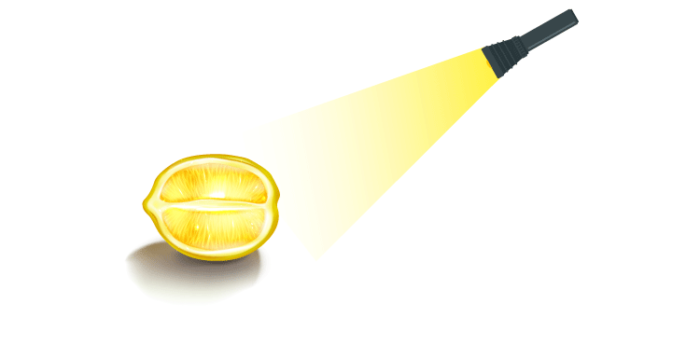
The Pinhole Camera
Formation of Image by Pinhole Camera
- A pinhole camera is a simple camera that consists of a light-proof box, a thin film for a screen and a small aperture or hole to allow the passage of light rays.
- The light from outside enters through the small hole and forms an image on the screen that is inverted.
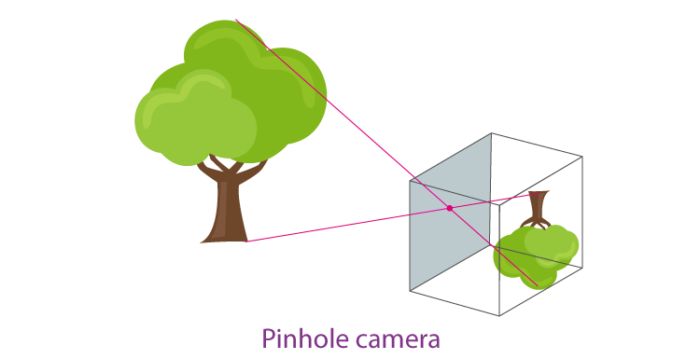
Mirrors and Reflection
Mirrors
A mirror is a surface usually consisting of glass that reflects light incident on it to form clear erect images.
Reflection
When light is incident on a surface, it gets reflected or bounces back. Any surface that is really well-polished or shiny acts like a mirror. The phenomenon of light bouncing off surfaces is called reflection.
Characteristics of Images
- Images have colour, unlike shadows. They are formed due to the converging rays of light that come after reflecting from objects.
- A real image is formed by the actual convergence of light rays. Real images always form on a screen.
- A virtual image is the apparent convergence of diverging light rays. Virtual images cannot be obtained on a screen.
Plane Mirrors and Images Formed by Them
A plane mirror changes the direction of light that falls on it.
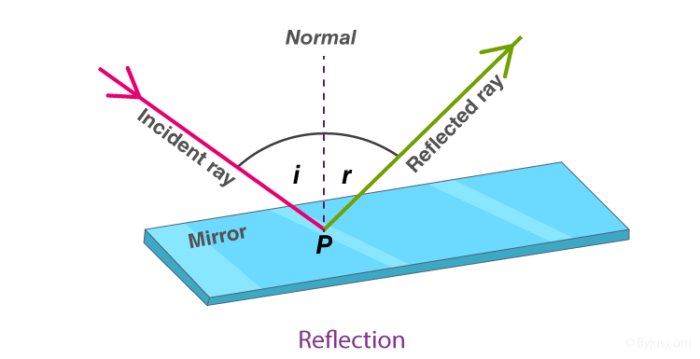
This enables us to see images. Take the example of a comb placed in front of a mirror over a dark-coloured paper. Let a beam of light pass through the comb on the mirror using a torch. Then an image is observed similar to the one given :
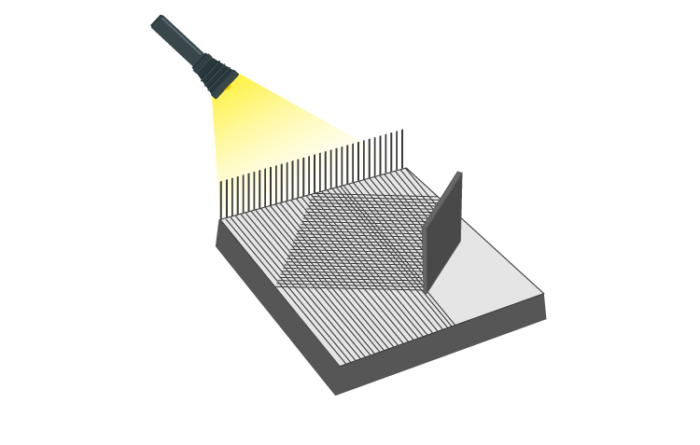
We observe that the light gets reflected from this mirror, and it travels in straight lines.
Short Answer Type Questions
1. State the difference between a luminous and a non-luminous body.
- Luminous bodies emit light, like the sun. Non-luminous bodies, like the moon, do not emit light.
2. Why is the moon not considered a luminous body?
- The moon is not considered a luminous body because it shines by reflecting sunlight.
3. What is an incandescent body? Give an example.
- Incandescent bodies emit light when heated to a very high temperature. An example is an electric bulb.
4. When does a shadow form?
- A shadow forms when light does not reach behind an opaque object placed in the path of light.
5. What are the essential conditions for the formation of a shadow?
- Essential conditions for shadow formation are an opaque material, a source of light, and a screen.
6. Define the reflection of light.
- Reflection of light is when light rays, after striking a smooth and shiny surface, return to the same medium.
7. Write the difference between shadow and image.
- A shadow is a dark outline formed by an opaque object blocking light, while an image is a reproduction of an object formed by reflected or refracted light.
8. How will you convert a glass sheet into a translucent sheet?
- You can convert a glass sheet into a translucent sheet by smearing a thin layer of oil or covering one side with butter paper.
9. What is shadow? How does the color of an opaque object affect the color of the shadow?
- A shadow is a dark outline formed by an opaque object. The color of an opaque object does not affect the color of the shadow.
10. Write the differences between umbra and penumbra.
- Umbra is the darkest part of a shadow, while penumbra is the less dark region on the shadow’s periphery.
11. What do we need to see a shadow?
- To see a shadow, we need a source of light, a screen, and an opaque object.
12. What do you mean by scattering of light?
- Scattering of light occurs when a beam of light falls on a rough surface and is turned back in different directions.
Also Visit: Readspot

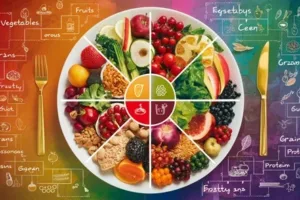
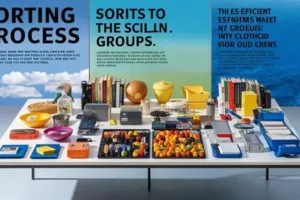
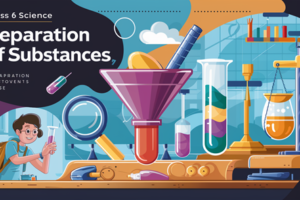
1 Comment